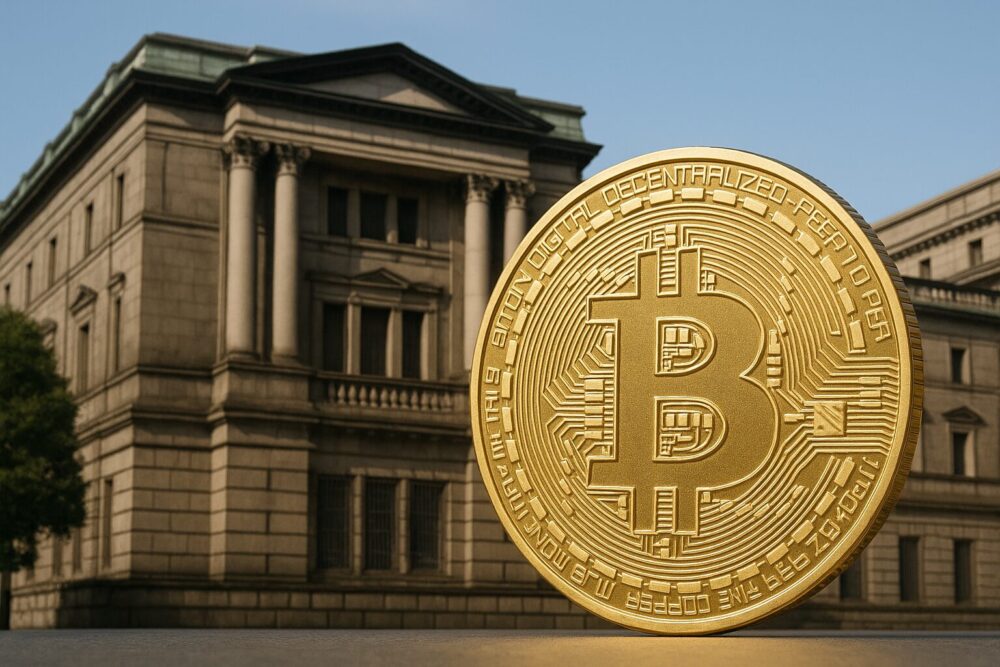The financial world is watching the Bank of Japan (BOJ) as it prepares for a crucial monetary policy meeting scheduled for June 16–17, just before the US FOMC meeting.
With potential shifts in bond-buying strategies and inflation management, investors believe the central bank’s decisions could ripple across global markets and send cryptocurrencies, especially Bitcoin (BTC), on a major price move.
Market participants are closely monitoring signals of a potential pivot from quantitative tightening (QT) to renewed easing, a development that could create bullish momentum for risk assets.
At the center of this speculation is the possibility that Japan may once again turn to quantitative easing (QE), reigniting liquidity and reshaping investor sentiment.
Bitcoin rally hinges on BOJ policy shift
Currently, Bitcoin is consolidating just below $110,000 within a descending triangle pattern—a setup often followed by explosive breakouts.
Technical analysts say the crypto market is watching for a decisive move above $110,000, which could trigger a rally toward $115,000 or higher.
With volume stable and the relative strength index (RSI) neutral, the technical conditions are primed for a reaction to macro developments and the BOJ meeting may serve as the match to ignite the next bull phase, especially if policy leans dovish.
Arthur Hayes, co-founder of BitMEX and CIO at Maelstrom, has emerged as a key voice linking the Bank of Japan’s decisions to Bitcoin’s next move. On June 10, Hayes posted that if the BOJ restarts QE or even delays its current pace of QT, risk assets like Bitcoin could “fly.”
Hayes argues that renewed bond purchases by the BOJ would flood the market with yen liquidity, making BTC more attractive as a hedge against fiat debasement and bond market instability. This sentiment echoes a growing view that Bitcoin is increasingly seen not just as a speculative asset but as a strategic hedge in an era of rising sovereign risks.
Notably, this narrative has gained traction after Japan’s 30-year bond yield surged to a record 3.185% in May, sparking fears about the sustainability of Japan’s debt burden and prompting institutional interest in non-sovereign alternatives like Bitcoin.
BOJ is expected to ease the QT pace
According to a recent Bloomberg report, the BOJ may slow its QT program, halving its bond purchase reduction from ¥400 billion to ¥200 billion per quarter. That pivot, even if gradual, would signal a dovish tone from policymakers who are now weighing inflation risks against fragile economic growth.
Former BOJ executive Eiji Maeda suggested that this slowdown in bond sales could begin in 2027, but the interim assessment this June could set that trajectory in motion. Market watchers believe such forward guidance could have an immediate impact on asset pricing, especially for those seen as sensitive to liquidity cycles, chief among them, crypto.
Governor Kazuo Ueda, while signaling readiness to raise interest rates, also emphasized caution. He noted that underlying inflation has yet to stabilize sustainably above 2%, meaning the BOJ remains committed to maintaining supportive financial conditions for now.
Bitcoin is seen as a hedge against sovereign risk
Notably, the recent Bitcoin price movements have reflected its sensitivity to Japanese bond developments. On May 22, just two days after bond yields hit record highs, BTC soared to an all-time high of $112,000.
Analysts argue that such price movements underscore Bitcoin’s emerging role as a hedge against sovereign instability and fiscal uncertainty.
According to Bitwise’s André Dragosch, institutional investors increasingly view Bitcoin as “free from counterparty risk,” especially as traditional government bonds come under scrutiny.
This dynamic has only deepened as inflation persists in Japan and geopolitical risks grow globally, bolstering Bitcoin’s appeal as a decentralized, finite asset.

